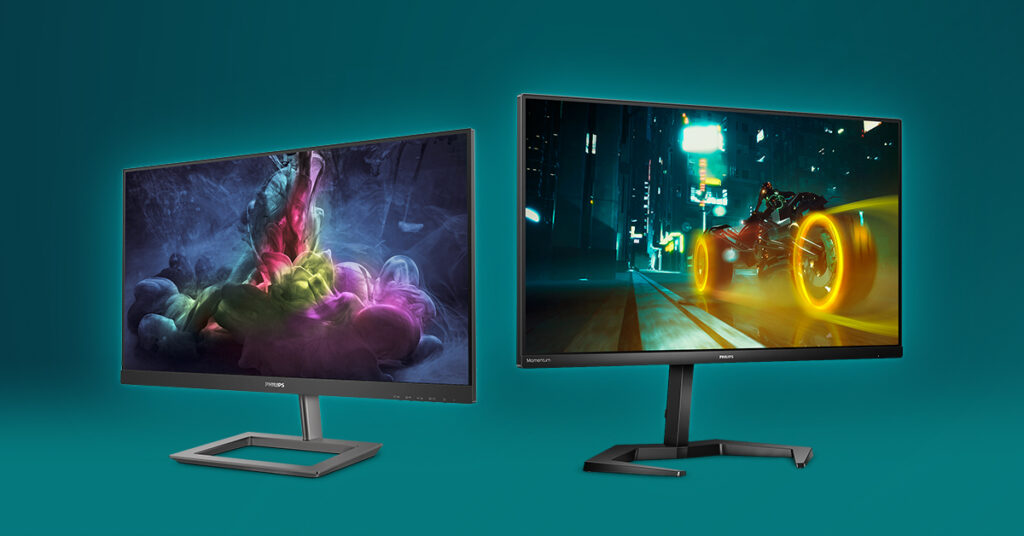How does my PC budget influence my monitor choice?
The best gaming monitor offers you the right mix of refresh rate, resolution, and size to immerse you in your favorite gaming world. To make the most of what your CPU and GPU can achieve, a gaming monitor is one of the key components of your gaming setup, and definitely a worthy investment in the longer run.
However, when you have refresh rates, size, pixel density, aspect ratios, curvatures, response times, different connections, color reproduction, contrast level, panel types, and a budget to look at – where do you begin? How do you decide what aspect matters most?
Let us help you look beyond the marketing gimmicks and choose the best monitor with most fitting features based upon your budget.

Aspect Ratios and Resolutions
If you are under the notion that a larger screen resolution translates to being the best, we are here to tell you otherwise, or at least base your decision on your gaming choices. The aspect ratio directly correlates with the pixel resolution. As most monitors fall into a few resolutions, they are then widened for a wider ratio. You will notice a standard 1080p monitor with a 1920×1080 pixels resolution with a 16:9 aspect ratio, and an ultra-wide 1080p monitor with a resolution of 2560×1080 pixels. Even though the height remains uniform, there are more pixels horizontally, giving a 21:9 aspect ratio.
The most common ratio and resolution we hear are 16:9 and 1080p. Whereas 2560×1440 is known as 1440p and 3840×2160 is 4K or UHD. The 21:9 ultrawide screen ratio has gained more gaming traction as the greater width provides a better immersion experience as it equips you with more visibility in the peripheral. The enemies are yours to take over now!
The super ultra-wide ratio of 32:9 – basically the benefit of two monitors without the bezels provides a complete immersion for flight simulation games. However, make sure to match your graphics card handles with the desired resolution and game settings, such as Philips Curved SuperWide-LCD-Display 32:9 498P9Z.
Does Size Matter?
In the monitor world, it does!
We recommend choosing the monitor size and then the appropriate resolution with the distance you will sit from the monitor. Your monitor size affects the pixel density for a given resolution. For example, with a 16:9 ratio as the base and same viewing distance, a 1080p 24-inch monitor looks sharper than a 1080p 32-inch monitor despite the same resolution. The reason for this is that the 32-inch monitor has lesser pixel density. However, the large size benefits you if you sit further from the monitor. Resolution and size are the biggest factor for pricing, within monitor groups with equal technology.
Which Panel would you Prefer?
Let’s talk about panels – from Twisted Nematic (TN), Vertical Alignment (VA), In-plane Switching (IPS), and OLED – the panel world has come a long way through. Typical gaming monitors use Twisted Nematic to achieve the fastest refresh rates for competitive players. However, IPS are also becoming popular with technological progression due to accuracy in color reproduction at acute angles and higher refresh rates such as Philips 24M1N3200ZA. The latest models have VA panels, which is between TN and IPS, while OLED is the most expensive option per pixel light control for the best experience.
The Most Hyped Factor – Refresh Rate
As a competitive gamer, you may consider refresh rates as the end-all for gaming. Refresh rate is the number of times a monitor update in a second (measured in Hertz). The most common refresh rates you will find in the market are 120, 144, and 165. However, you will need to decide whether your graphics card can handle it because if your graphics card cannot handle it, there is no point in splurging into a higher refresh rate!
Make Tearing, Stuttering, and Judder a Thing of the Past!
To gain a smoother gaming and focus on a perfectly immersive experience – you get adaptive sync, AMD freesync, and NVIDIA G-sync. Where adaptive sync is the standard implemented by VESA (Video Electronics Standards Association) that allows a monitor to be synced up to a graphics card, and eliminates tearing, stuttering and juddering.
Whereas AMD Freesync is AMD’s adaptation of this standard, it reduces any visual artifacts such as input latency, tearing, and stuttering – not as helpful as adaptive sync or the latest G-sync.
G-Sync is NVIDIA’s version that does not use the adaptive sync standard; instead, a special chip is added to sync GPU and the monitor. The latest Philips 24M1N3200ZA and 24M1N3200ZA reduce system latency, increase responsiveness, aiming precision, and an updated opponent’s location.
Underrated Considerations – Mounting Options and Connectivity
Firstly, always ensure a maneuverable stand that allows movement such as panning, tilting, height adjustment, and rotational adjustment. Next, although most users suffice with a single input, it is imperative to consider future needs to avoid awkward disconnections for a games console or blu-ray players. Another underrated consideration is the low blue light mode that reduces the blue light emitted by the screen and is found in most Philips monitors. It helps to reduce eye strain if you plan to spend considerably longer gaming hours on weekends.
What Will you Choose?
Hopefully after all the information, you will be able to make a more comprehensive approach towards choosing the best gaming monitor according to your budget. Philips 4K UHD 279M1RV offers you gaming that comes to life with HDR600 and Ambiglow. Whereas, Philips 24M1N3200ZA offers a full HD gaming experience on a budget!
What immersion experience will you choose for yourself? Philips gaming monitors have got you covered!
